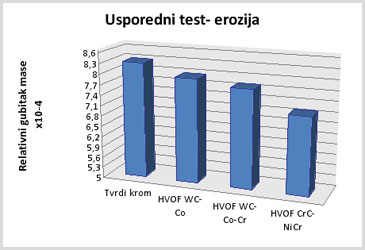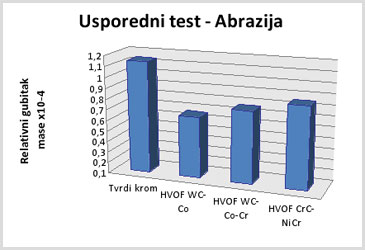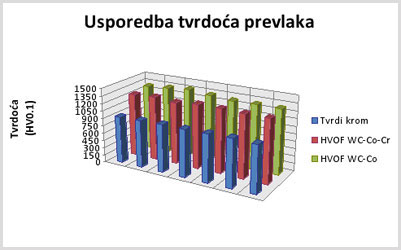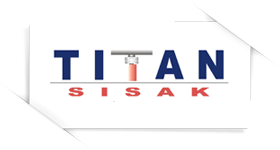Aplications
Techniques developed for repair and re-coating have been standardized by many industries in the world and their specific application depends on operating conditions and the required thickness of coating.
Brush plating is standardized for sliding surface coatings, reparation of heat sensitive parts and fine local damages. Copper and zinc based materials are used to repair deeper damages or to obtain conductive surfaces, while nickel-sulfamates represent metallic coatings with the lowest friction coefficient (μ~0,09) after Teflon® with the hardness between 46-48 HRc and therefore are an excellent choice for general repair of internal and external sleeves, or for surfaces coated to final measure without post machining.
Specific part of the Brush plating are chromium based electrolytes which are corrosive and hazardous free in the application, and due to their very high density are excellent alternative to hard chromium plating.
HVOF is a worldwide standard for the carbide coatings, where the low gas temperature does not cause degradation-decarburisation of carbide phases, and the speed of the jet by itself prevents oxidation which can lead to the formation of brittle phases and greater sensitivity to cracks. The filler material selection depends on temperature and application conditions, while all materials have excellent resistance to abrasion, galling and erosion. In addition, for certain applications, there is a possibility for 'as sprayed coating' – which does not require post machining. Surface roughness of the as-sprayed coatings is Ra~3,2 μm
HVOF carbide based coatings like WC-Co, WC-Co-Cr, CrC-NiCr, are excellent hard chromium plating alternatives with better chloride, acidic and alkaline resistance, and the service temperature up to 870 °C. These materials are certified in aviation and petrochemical industry for high pressure piston rods, turbine components, pump seals and valve gates.
Coatings such as chromium oxide (Cr2O3) present new solutions for the bearing sleeves and ring type seal seats, given the very low low coefficient of friction (μ ≅ 0.11). The chromium oxide is the most chemically inert material insoluble in any environment.
Ceramic coatings like aluminium oxide (Al2O3) are effective and reliable solutions for the textile and printng industry (paper rolls, wear rings). Furthermore, these coatings are insoluble in most acids, alkalis and alcohol and can be used in corrosive chemical environments.
Materials based on zirconium oxide (ZrO2) are used as thermal barrier (TBC – Thermal barrier coatings) insulating layers which offer thermal protection at temperatures up to 1250 °C in turbine engine components, combustion liners, afterburners, exhaust pipes, furnaces, etc.
The aforemetioned techniques can be used to apply materials similar to Stelite® and Hastelloy®, which offer better wear resistance with high corrosion resistance due to higher content of chromuim and tungsten.



text
